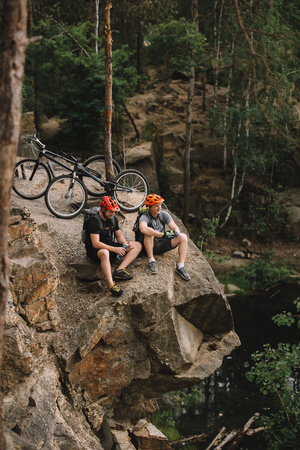The British Hills: Understanding Your Terrain
For the adventurous British hillwalker, the journey begins with the land itself. The UK’s hills are a patchwork of untamed beauty and unpredictable challenge, each region offering a unique test for both mind and muscle. Picture yourself scrambling up the jagged ridges of Snowdonia, where ancient volcanic rock demands nimble footwork and steady nerves. Or perhaps you’re braving the relentless winds atop Scafell Pike in the Lake District, where every step is a battle against the elements and your own limits. These iconic landscapes aren’t just backdrops—they’re training partners that shape your stamina, resilience, and strategy.
Endurance training for hillwalking in Britain isn’t a one-size-fits-all endeavour. The boggy moorlands of Yorkshire Dales, the granite tors of Dartmoor, and the rolling Cheviots each require a different approach. Training on soft peat will strengthen stabiliser muscles and ankles, while long slogs over scree and loose rock will toughen your feet and sharpen your balance. The unpredictable British weather—mist rolling in without warning, rain lashing sideways—forces you to adapt quickly, turning every walk into an adventure of extremes.
Understanding your terrain is about more than memorising maps or learning place names; it’s about embracing the wild character of each hill. In this guide, you’ll learn how to tailor your endurance training to meet these diverse challenges head-on, forging not just physical strength but an indomitable hillwalker’s spirit.
2. Foundations of Endurance: Building a Robust Base
Before you can power up Helvellyn or trek across the boggy moors of Snowdonia with the stamina of a seasoned fell-runner, every British hillwalker must first lay down a solid foundation of endurance. Our unique landscape—think relentless drizzle, squelching peat, and endless undulations—demands more than just enthusiasm. To thrive on these long, sodden days, cardiovascular strength and stamina are your ticket to adventure and survival alike.
The Role of Cardiovascular Conditioning
Cardio is king when it comes to fending off fatigue on multi-hour hikes across the fells. But forget sprint intervals for now; the real magic lies in slow-burn, steady-state efforts that gradually fortify your heart and lungs. By keeping your pace at a level where you can still chat about the weather (and in Britain, thats a lot of chatting), youre training your body to efficiently use oxygen and fat as fuel—a necessity for those eight-hour yomps through rain-lashed ridges.
Recommended Weekly Endurance Sessions
| Session Type | Duration | Intensity | Terrain Example |
|---|---|---|---|
| Long Steady Walk | 2-6 hours | Low to Moderate (Conversational Pace) | Lakelands, South Downs Way |
| Tempo Hill Repeats | 45-60 minutes total (5-10 min climbs) | Moderate (Slightly Breathless) | Pennines slopes or local woodland hills |
| Moorland Marches | 90-120 minutes | Low (Easy Stroll) | Dartmoor, North York Moors |
The Power of Slower Sessions
You might be tempted to charge up every slope like a mountain goat on espresso, but seasoned British hillwalkers know that slower, consistent sessions are the backbone of resilience. These outings condition not just your muscles, but also your connective tissues and mental grit—qualities essential when faced with sideways rain and soul-sapping mud. In fact, most top fellwalkers spend 70–80% of their training time at this easy pace, using only occasional bursts of effort to spice up their regimen.
Why Consistency Trumps Intensity in British Terrain
- Weather Adaptation: Frequent exposure to wind, wet, and cold builds tolerance as well as fitness.
- Injury Prevention: Gradual progress toughens joints and tendons against twisted ankles and slips.
- Mental Fortitude: Long hours in remote places forge a stoic mindset—vital when the mist rolls in.
If you’re serious about conquering Britain’s wildest hills, don’t rush the process. Build your base with patience and persistence—the true mark of a hardy hillwalker ready for any adventure our unpredictable countryside can throw at you.

3. Going Beyond the Path: Strength, Mobility, and Injury Prevention
When it comes to British hillwalking, sheer stamina isn’t enough—your body needs to handle the rugged, often unpredictable terrain that defines our wild uplands. It’s not just about grinding out miles; it’s about stepping, scrambling, and leaping over whatever the path throws at you. To thrive in these conditions, developing strength, mobility, and resilience is non-negotiable.
Core Stability: Your Hillwalker’s Powerhouse
The heart of every successful ascent is a strong core. Picture yourself hopping over stiles on the Pennine Way or tackling a blustery scramble on Helvellyn—your core keeps you upright and balanced. Incorporate planks, Russian twists, and bird-dogs into your weekly training. These moves don’t just build muscle—they create the stability needed to shoulder a rucksack through boggy moorland or along windswept ridges.
Ankle Strength and Flexibility: Conquering the Unpredictable
Boggy tussocks, loose scree, hidden rabbit holes—British trails are an obstacle course for your ankles. Bulletproof them with exercises like single-leg calf raises, resistance band ankle rotations, and balance drills (think standing on one leg while brushing your teeth). Don’t neglect flexibility: regular calf stretches and yoga sequences such as Downward Dog or Pigeon Pose help you react nimbly to uneven ground without rolling an ankle.
Mobility: Flow Through Every Step
Dynamic mobility drills are your secret weapon for gliding over obstacles instead of stumbling. Try walking lunges with a twist before heading out, hip circles after long days on the fells, and foam rolling sessions in the evening. The more mobile your hips and shoulders, the more fluidly you’ll clear boulders or duck under low branches in ancient woodlands.
Injury Prevention: Outlasting the Elements
No one wants their adventure cut short by injury. Integrate prehab routines like glute bridges for knee support and regular proprioception work (balance pads or wobble boards) to sharpen your body’s sense of position. Always listen to niggles—early intervention with rest and stretching trumps weeks off the hills nursing a sprain.
Mastering these essentials means you’ll be ready for whatever Britain’s trails throw at you—from rocky Lakeland scrambles to misty Highland passes—staying strong, supple, and injury-free as you chase adventure over every horizon.
4. Training with the British Weather
If there’s one thing that unites hillwalkers across the UK, it’s the ceaseless challenge thrown down by the British weather. From relentless drizzle to gale-force winds and ankle-deep mud, our landscapes are shaped by the elements—and so are we. To truly prepare for endurance on Britain’s rugged hills, you must not only train your body but also forge a mind as stubborn as the Scottish mists.
Embrace the Elements: Why Weather Matters
The temptation to wait for a clear sky is strong, but real progress comes when you head out regardless of the forecast. Training in adverse conditions toughens you up, both physically and mentally. Every sodden boot, every icy gust faced head-on builds resilience—essential for those moments on the fells when comfort is a distant memory.
Weather-Proof Training Strategies
| Weather Condition | Training Adaptation | Mental Benefits |
|---|---|---|
| Rain & Drizzle | Wear waterproofs; focus on steady pacing over slippery ground; embrace getting wet. | Improves tolerance for discomfort; sharpens focus on footing. |
| High Winds | Practice balance drills; hike into the wind to build strength; learn efficient layering. | Boosts confidence in exposed terrain; fosters adaptability. |
| Mud & Bog | Choose routes with challenging surfaces; work on core stability and foot placement. | Develops patience and determination; enhances problem-solving. |
Mental Grit: Turning Adversity into Advantage
Every squall endured is a badge of honour. When your kit is soaked and your boots are heavy, remember that these conditions separate the weekend wanderer from the true hillwalker. Visualise future summits shrouded in mist and know that each storm battled now will make those moments all the sweeter.
So next time the rain lashes sideways or the clouds sit low over Dartmoor, lace up and get out there. The wild British weather isn’t an obstacle—it’s your ultimate training partner.
5. Fuelling the Adventure: British Hill Food and Hydration
When it comes to conquering Britain’s rugged hills, proper fuelling is as crucial as your boots or waterproofs. Local hillwalkers know that stamina on the fells isn’t just about endurance training—it’s also about what you eat and drink along the way. Here’s how to keep your energy high and your spirits unbreakable, with a nod to classic British hill food traditions.
The Legendary Kendal Mint Cake
No British rucksack is truly complete without a slab of Kendal mint cake. This sugary, peppermint treat has powered generations of adventurers, from Lake District hikers to Everest climbers. It’s lightweight, packs a mighty glucose punch, and offers a refreshing zing when fatigue sets in. Pop a piece at the summit for an instant morale boost—and a taste of hillwalking history.
Flapjacks: The Oaty Powerhouse
For slow-release energy, nothing beats a homemade flapjack. These chewy bars—packed with oats, golden syrup, and perhaps a handful of sultanas—are a staple on the UK’s trails. Easy to bake in bulk, they survive squashing in your pack and deliver reliable fuel mile after mile. They’re also infinitely customisable; add seeds or nuts for extra protein on those especially demanding routes.
The Trusty Thermos Flask
British weather is famously unpredictable, but a hot cuppa can make any drizzly day feel brighter. A sturdy thermos filled with strong tea (or coffee if you prefer) not only keeps you warm but also provides essential hydration when water sources are scarce or icy cold. For longer treks, consider packing two flasks—one for tea, another for hearty homemade soup to stave off hunger on wind-battered ridges.
Other Hill Food Essentials
While Kendal mint cake and flapjacks are iconic, don’t overlook other local favourites: pork pies from Melton Mowbray, Scotch eggs, and good old cheese-and-pickle sandwiches all make brilliant trail fare. Dried fruit, salted nuts, and oatcakes offer compact nutrition without weighing down your pack.
Hydration: More Than Just Water
Staying hydrated is vital—even in the chill of the Highlands or Peaks. While water should be your baseline (aim for at least half a litre per hour of walking), adding electrolyte tablets can help replace salts lost through sweat. On multi-day hikes, know your water sources: pack purification tablets or a filter for remote moors where streams may be questionable.
Embrace these practical—and delicious—British fuelling traditions to ensure every trek is an adventure that goes the distance. Proper nourishment isn’t just about energy; it’s about enjoying every step on the wildest stretches of Blighty’s hills.
6. Real-World Application: Structuring Your Weekly Programme
Ready to put theory into boots-on-the-ground action? Here’s your step-by-step guide to building a week that takes you from urban pavements to windswept ridges, all with a nod to the best of British endurance tradition.
Step 1: Choose Your Hill Sessions
No British hillwalker’s training is complete without a proper slog up the fells or moors. Aim for one or two focused hill days each week, whether it’s a Lake District classic or your local South Downs rise. Mix steady climbs with bursts of effort—think relentless “up and over” repeats on your nearest ascent. The goal? Build leg strength and stamina while soaking up those iconic views (and probably a bit of drizzle).
Step 2: Incorporate Lowland Rambles
Add in a couple of brisk lowland walks—perhaps along a canal towpath, through city parks, or across rolling fields. These sessions are about steady-state movement, perfecting your gait, and clocking up miles without the strain of steep gradients. Keep the pace purposeful; imagine you’re late for last orders at the village pub.
Step 3: Hit the Gym (Yes, Really!)
Dedicate one or two days to gym work focusing on core strength, balance, and mobility. Squats, lunges, deadlifts, and planks will pay dividends when you’re scrambling over scree or descending rocky paths. Don’t overlook flexibility—yoga or dynamic stretching sessions keep you limber enough for both styles of British weather: damp and very damp.
Sample Weekly Layout
Monday: Lowland ramble (steady pace)
Tuesday: Gym – strength & balance
Wednesday: Rest or light stretching
Thursday: Hill session – intervals on gradients
Friday: Gym – core & flexibility
Saturday: Big hillwalk (long duration)
Sunday: Recovery walk & obligatory tea stop
The All-Important Recovery Tea
No true British training week is complete without recovery—ideally spent in a cosy corner with a steaming mug of builder’s brew and perhaps a slice of flapjack. Use this time not just to rest muscles but to reflect on your progress, plan next week’s adventures, and enjoy the camaraderie that makes UK hillwalking unique.
This balanced approach keeps things fresh and challenging—just like our ever-unpredictable weather—ensuring you’re always ready for whatever Britain’s hills throw at you.


